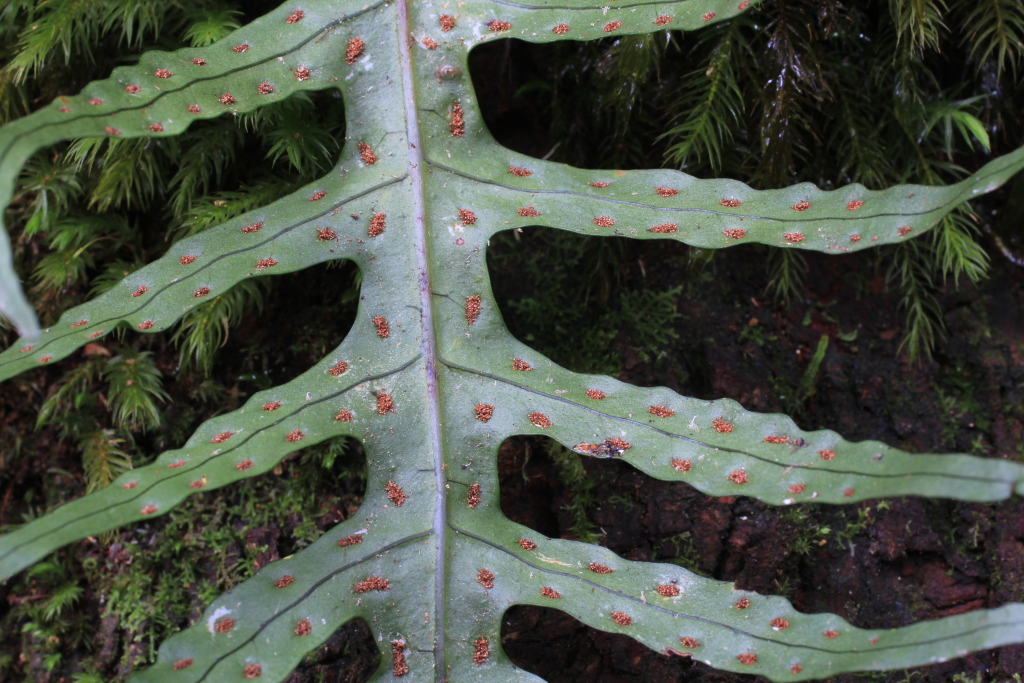Microsorum scandens
(G.Forst.) Tindale Fragrant FernRhizome creeping or climbing, dark green, wiry, 2–5 mm diam., densely scaly; scales brown, erect, shiny, acuminate, persistent. Fronds separated, erect or frequently drooping, variable in size and shape, 15–55 cm long, membranous to herbaceous; stipe relatively short, glabrous with scales clustered at base. Lamina narrowing gradually at base, dull, dark green, variable in shape, simple and linear-lanceolate with pointed tip, or irregularly pinnately lobed with long terminal segment and 4–20 pairs of lateral lobes, each 2–10 cm long; scales sparse or absent on undersurface of central vein, small, narrow. Veins relatively obscure, branching to give usually simple network; areoles enclosing simple or once bifurcate free vein endings; submarginal veins with free endings. Sori round to oval, 1–2.5 mm diam., slightly sunken (showing as raised circle on upper surface), in 2 rows, each nearer margin than midvein.
GipP, EGL, EGU, WPro, HSF, Strz, HFE. Also Qld, NSW, Norfolk Is. New Zealand. Found in moist and shady forest gullies, on mossy limbs, tree-trunks and tree-ferns, mostly in 'jungles' of East Gippsland, but with occurrences further west in Tarra Valley area and Wilsons Promontory. Occasionally occurring on rocks or as ground cover, particularly on river banks.
Although the rhizomes are usually densely clad with brown, erect scales, they do occasionally lose them. Fresh Microsorum scandens reputedly has a musky odour.
Entwisle, T.J. (1994). Ferns and allied plants (Psilophyta, Lycopodiophyta, Polypodiophyta). In: Walsh, N.G.; Entwisle, T.J., Flora of Victoria Vol. 2, Ferns and Allied Plants, Conifers and Monocotyledons, pp. 13–111. Inkata Press, Melbourne.
 Spinning
Spinning


